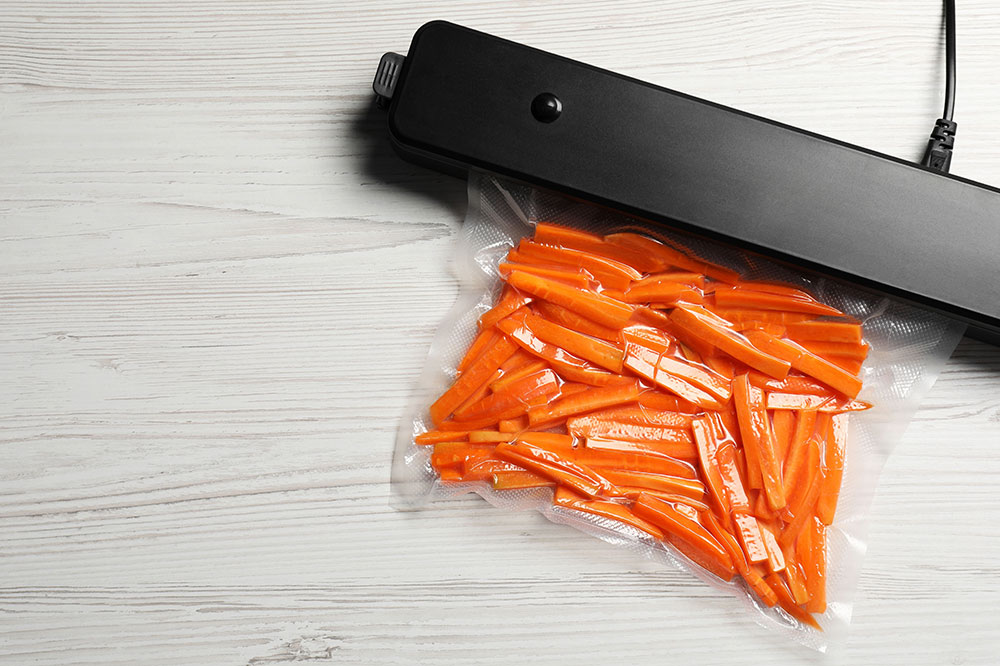Benefits of Vacuum Sealers and Tips to Use Them

Most people consider vacuum sealers an excellent addition to their home but not a necessary one. However, they can be instrumental in preserving food and preventing wastage. Rather than stacking up food items in the freezer, you can opt to place them inside packs of sealed air. It protects the foods from freezer burns and retains their freshness for longer. Keep reading to learn more about vacuum sealers, their functionality, uses, and more.
How do vacuum sealers work?
A vacuum sealer works by removing all the air out of the bag containing the food. Using a heated seal bar, it fuses the sides of the bag. It prevents the air from going back into the bag. This way, it eliminates the chances of your food getting spoiled or going stale over time. Here’s how you can effectively use vacuum sealers-
- Put the food you want to store in the bag.
- Clean the top of the bag to ensure there are no moisture or food particles near or on the part of the bag where it will be sealed.
- Switch on the sealer to heat the sealer bar.
- Now, place the bag opening in the sealer bar to seal it.
- Ensure that minimal to no air is present in the bag.
- Once done, store the bag in the pantry, freezer, or an area you choose.
Uses of vacuum sealers
- Sous vide cooking- Vacuum sealers rose to fame when sous vide cooking became popular a few years back. So these devices will be helpful if you frequently cook sous vide. Whether you want to cook chicken, steak, fish, or anything else, you don’t have to work with fussy zip-top bags. A vacuum sealer will help to get out all the air so that the bag doesn’t float while cooking.
- Store ingredients to use later- Storing your ingredients and produce in the refrigerator will keep them fresh only for a few days. If you want to save them for a longer time, put them in vacuum-sealed packages. For example, if you purchase a lot of herbs at the farmer’s market, they will wilt much before you can use them all up. A vacuum sealer will help to preserve them for weeks in the refrigerator. This way, you can even save some ingredients for months in the freezer.
- Sealing dry ingredients in jars- Some dry ingredients, such as spices, yeast, and nuts, spoil too quickly. Furthermore, you cannot finish them sooner since you can only use them in small quantities at a time. Sealing these items in bags to preserve them is not a wise idea because you have to cut open the bags and seal them again when using the ingredients. It is too much of a hassle and a waste of plastics. Therefore, a great alternative is to keep them in glass canning jars and vacuum seal them. There are several attachments available that are compatible with vacuum sealers to seal up the jars.
- Protect liquids from spoilage- Use vacuum sealers to preserve oils, vinegar, and other liquid ingredients in your pantry. Bottle stopper attachments are available that work well with most vacuum sealers. You can reseal open bottles and keep the liquids fresh for longer. However, don’t use these for storing sparkling wines, soda, or carbonated beverages. Since the vacuum seal will remove all the air, these beverages will lose their acidity.
- Protect items other than food- Use your vacuum sealer to preserve stuff beyond your pantry and refrigerator. For example, you can use it to seal and protect important documents such as birth certificates, graduation certificates, car titles, house titles, etc. This way, all your essential documents will be safeguarded against damage from water and other elements. Furthermore, you can vacuum seal other stuff, such as bandages, matches, and prescription remedies (that spoil quickly) for your emergency and first aid kits.
Tips and tricks to use vacuum sealers
- Always label first- You will want to label your vacuum-sealed bags with the ingredient’s name and the date you sealed the bag. But this cannot be easy if the bag is filled with food. Therefore, to solve this, ensure you label the bag before you fill the contents and seal it.
- Make sure to use a bag of the correct size- If your bag is too big or too small for its contents, you won’t benefit much from using a vacuum sealer. It is because your food may spoil quickly. To ensure proper sealing, the bag must have at least 2-3 inches of room at the top, between the sealing area and the contents. Also, if you use a small bag and food particles get on the bag’s opening, it won’t seal properly, allowing the air in and spoiling your food.
- Ensure the bags are cuffed before filling- To ensure the bag is well sealed, fold at least 2 or 3 inches from the top to make a cuff. Do this before you fill the bag with food. Once the bag is filled up, uncuff it and heat seal it.
- Seal the bags to be flat and stackable- To save space in the pantry or refrigerator, make the bags flat before sealing. Arrange the food inside the bag so it remains as flat as possible. It makes it easy for users to stack and organize all the bags on top of one another.
- Soft foods must be partially frozen- Delicate foods such as berries, grapes, or fish can get crushed while sealing the bag. To avoid this, put these foods in their respective bags and keep the unsealed bags in the freezer for some time. Once these foods are firm, you can proceed to heat seal the containers.

